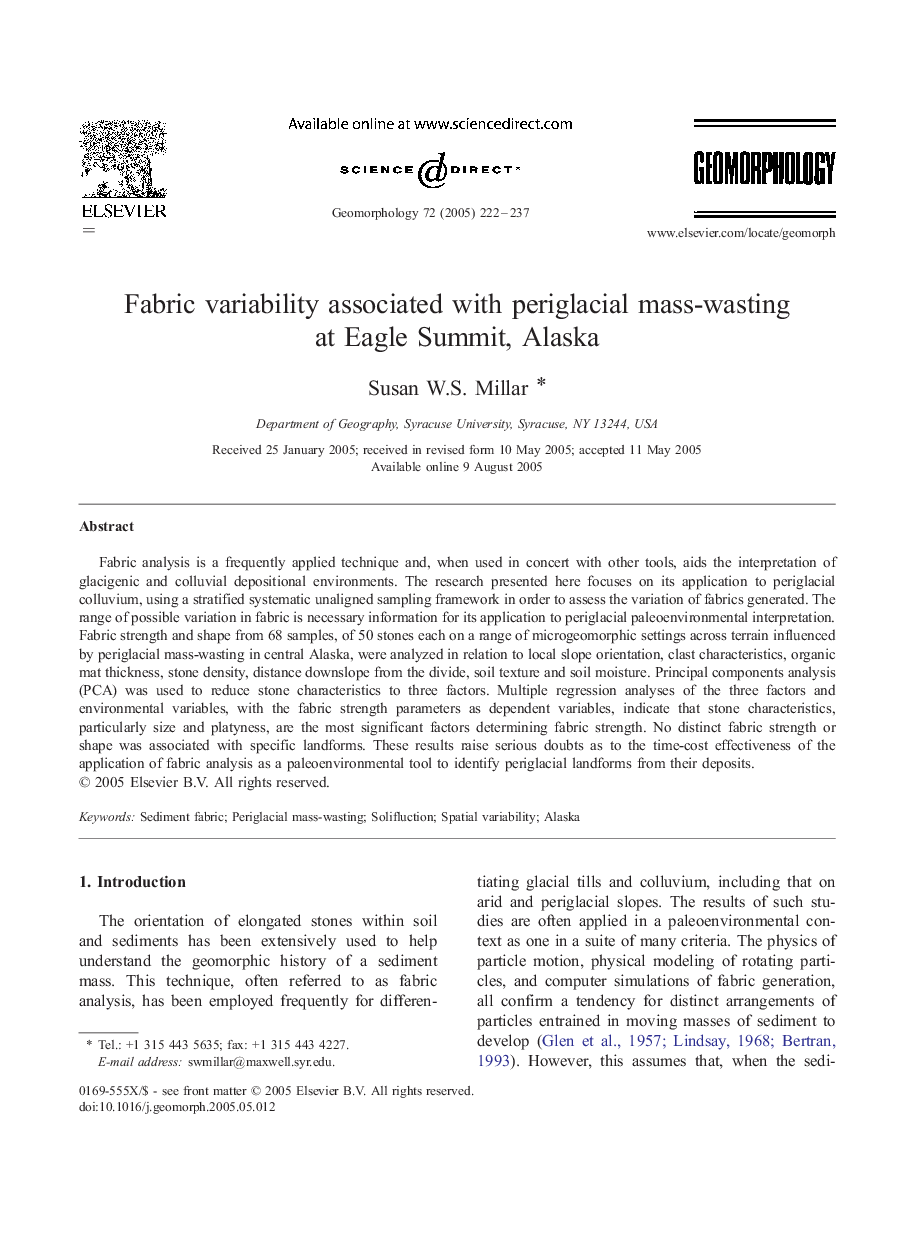| Article ID | Journal | Published Year | Pages | File Type |
|---|---|---|---|---|
| 9524791 | Geomorphology | 2005 | 16 Pages |
Abstract
Fabric analysis is a frequently applied technique and, when used in concert with other tools, aids the interpretation of glacigenic and colluvial depositional environments. The research presented here focuses on its application to periglacial colluvium, using a stratified systematic unaligned sampling framework in order to assess the variation of fabrics generated. The range of possible variation in fabric is necessary information for its application to periglacial paleoenvironmental interpretation. Fabric strength and shape from 68 samples, of 50 stones each on a range of microgeomorphic settings across terrain influenced by periglacial mass-wasting in central Alaska, were analyzed in relation to local slope orientation, clast characteristics, organic mat thickness, stone density, distance downslope from the divide, soil texture and soil moisture. Principal components analysis (PCA) was used to reduce stone characteristics to three factors. Multiple regression analyses of the three factors and environmental variables, with the fabric strength parameters as dependent variables, indicate that stone characteristics, particularly size and platyness, are the most significant factors determining fabric strength. No distinct fabric strength or shape was associated with specific landforms. These results raise serious doubts as to the time-cost effectiveness of the application of fabric analysis as a paleoenvironmental tool to identify periglacial landforms from their deposits.
Related Topics
Physical Sciences and Engineering
Earth and Planetary Sciences
Earth-Surface Processes
Authors
Susan W.S. Millar,
